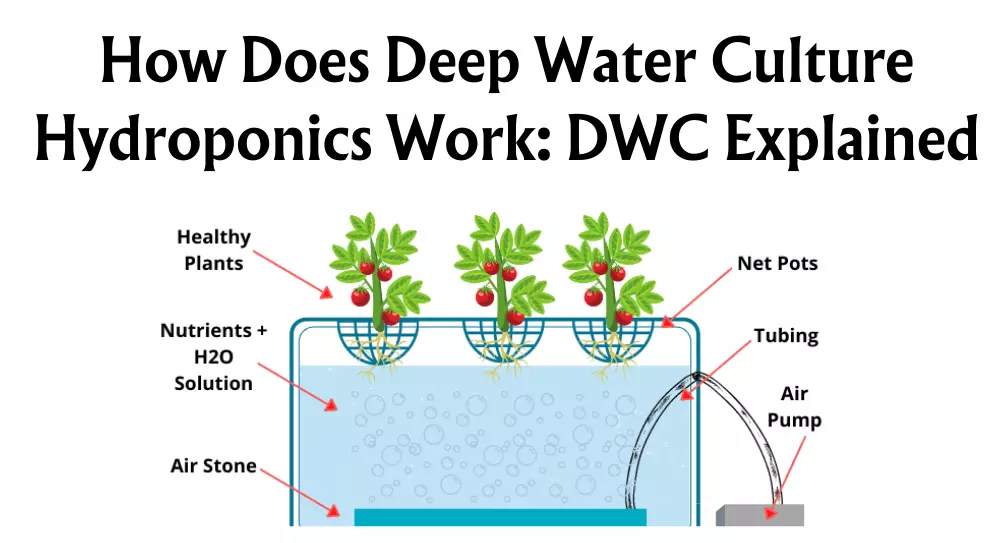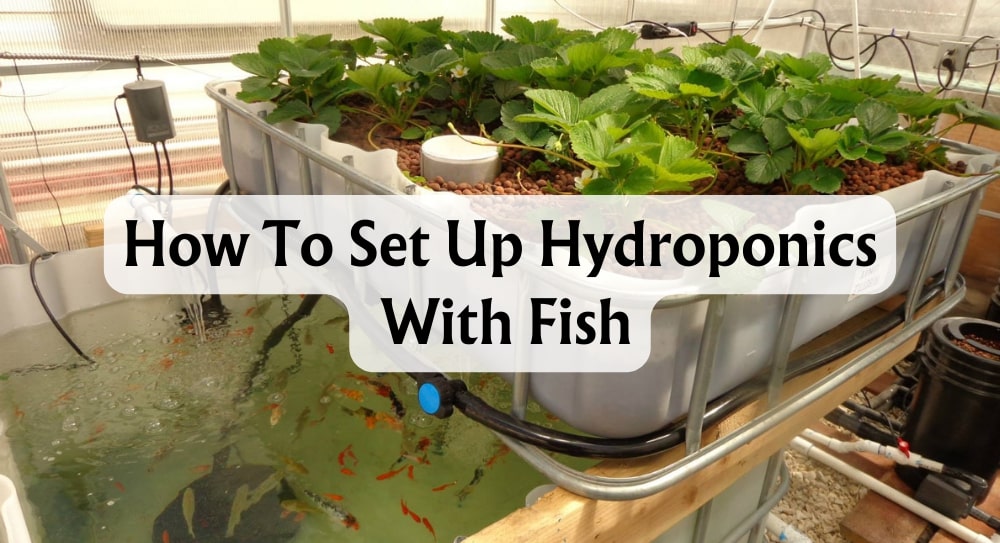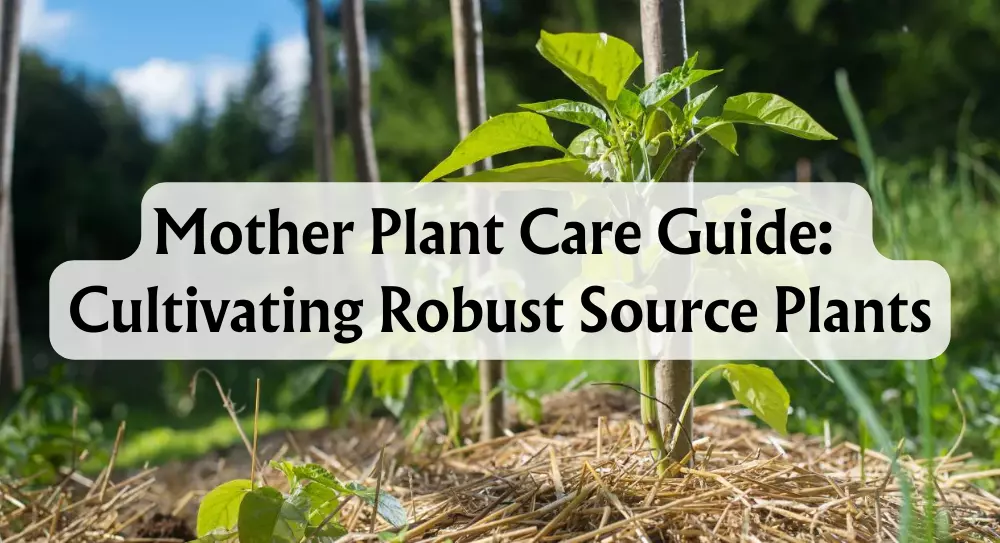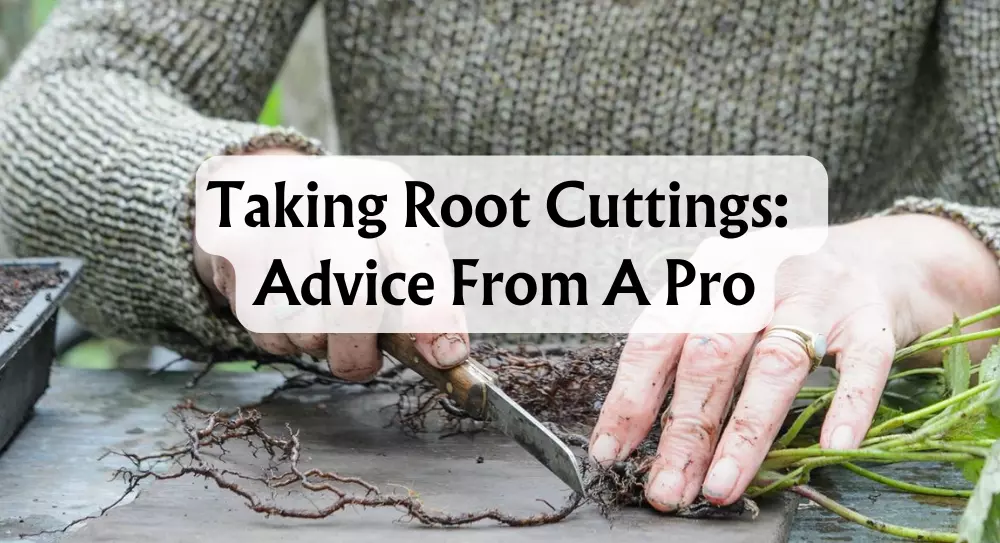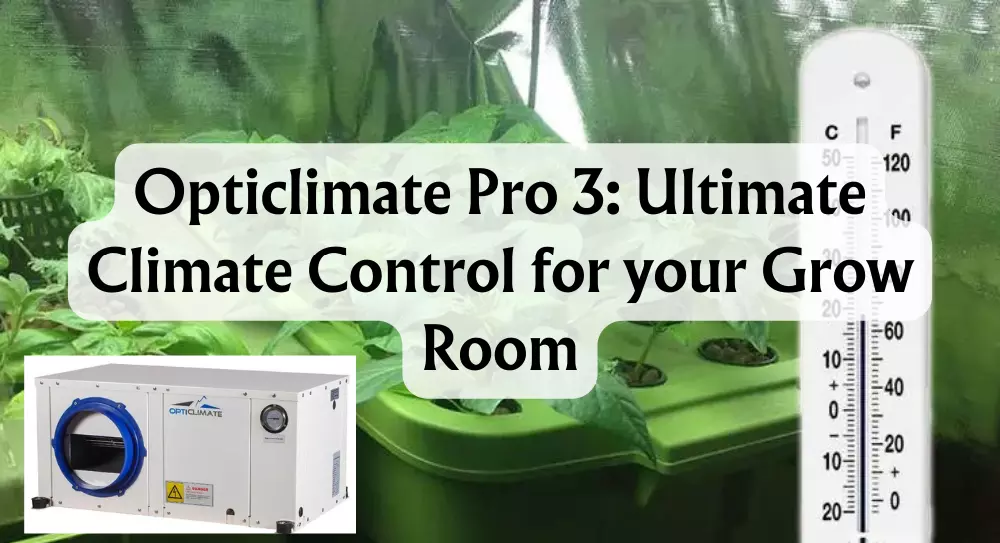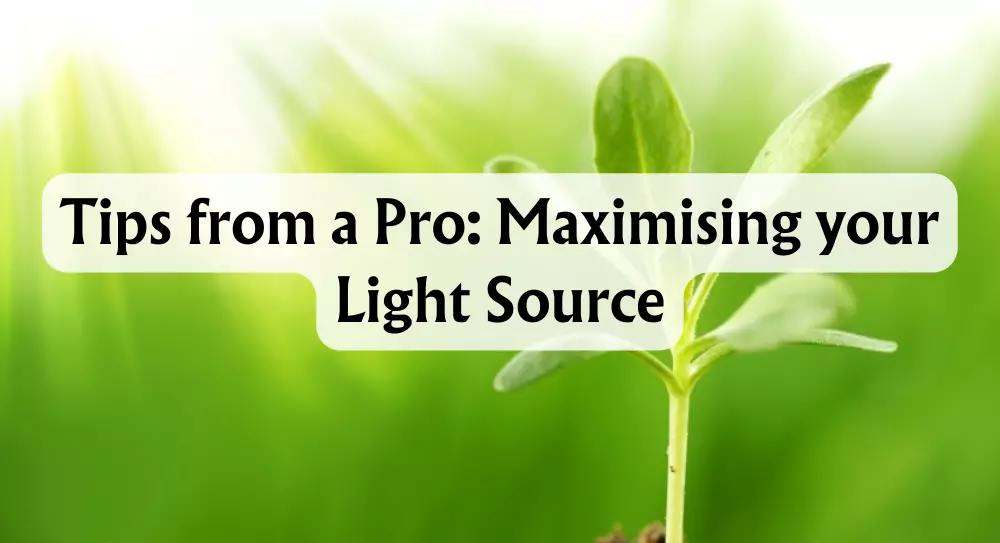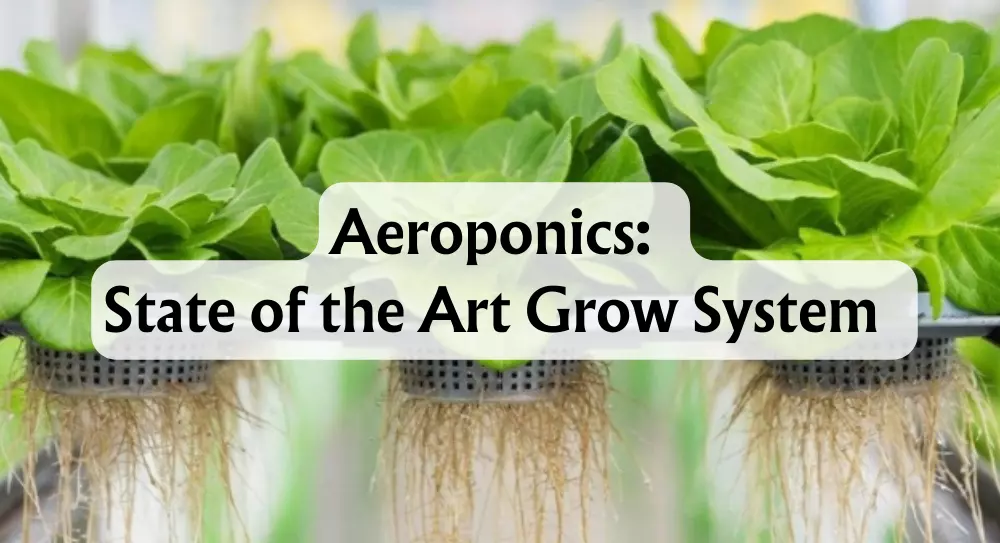How Does A DWC Hydroponic System Work
In the realm of hydroponic growing, DWC, or deep water culture, has taken a front seat due to its simplicity and efficiency. Now, what exactly is a DWC hydroponics system? Think of it as aquatics for plants where, rather than swimming, they thrive in a nutrient-laden aqueous solution without a speck of soil. It's a form of water culture hydroponics, one among the six primary categories, characterised by roots being suspended in water rich in nutrients and oxygen.
This water-based haven for roots is the crux of how a DWC system operates. By ensuring the roots make constant contact with the nutritional solution, complemented by ample oxygen provided by an air pump and air stone, plants access everything they need for growth directly from the water, bypassing the need for soil.
Imagine us as chefs in a kitchen, concocting the perfect blend of ingredients for our green guests. The article we've put together serves up hearty portions of information you need about setting up your own DWC system, balancing nutrients and pH, and troubleshooting common issues. DWC systems bring forth a myriad of advantages such as faster growth and less maintenance, but like all methods, they come with their own set of challenges.
Key Takeaways
- DWC hydroponic systems allow plants to grow in water enriched with nutrients and oxygen.
- Setting up a DWC system involves a container, water-nutrient solution, air pump, and air stone.
- Maintenance includes nutrient and pH level management, as well as regular water changes.
What Is DWC Hydroponics?
Deep Water Culture (DWC) is a remarkably simple and efficient form of hydroponics. It's all about letting the roots take a dip! In a traditional DWC system, the plant's root system sits in a nutrient-rich bath. How does this magical bath work? It's a savvy dance between a few key components:
- The Reservoir: It holds our main act, the nutrient solution, which is just water jazzed up with essential plant nutrients.
- Air Pump & Air Stone: Together, they form air bubbles, providing oxygen to the roots. This oxygen isn't just for a bit of fun; it's vital for healthy growth.
- Net Pots and Growing Medium: You don't have to worry about soil! These little pots and media keep the plants stable while allowing roots to plunge freely into the watery depths below.
Talking to you, fellow growers, here's the lowdown on the roots' underwater adventure: As the air pump sends bubbles of oxygen through the water via the air stone, the roots suck up the good stuff — oxygen, water, and nutrients — in a non-stop party. It's like an all-you-can-eat buffet for plants!
While DWC growing sounds revolutionary, it's one type of system in a group of hydroponic techniques. Others like ebb and flow, the nutrient film technique, aeroponics, drip, and wick systems all have unique ways of feeding plants — but DWC keeps it uncomplicated. Here's a bonus for you: DWC isn't picky about the guest list. A variety of plants like lettuce, spinach, kale, and herbs such as basil and mint thrive in these systems. Even the heavy eaters like tomatoes, peppers, and strawberries love a good DWC setup.
Benefits Of Deep Water Culture
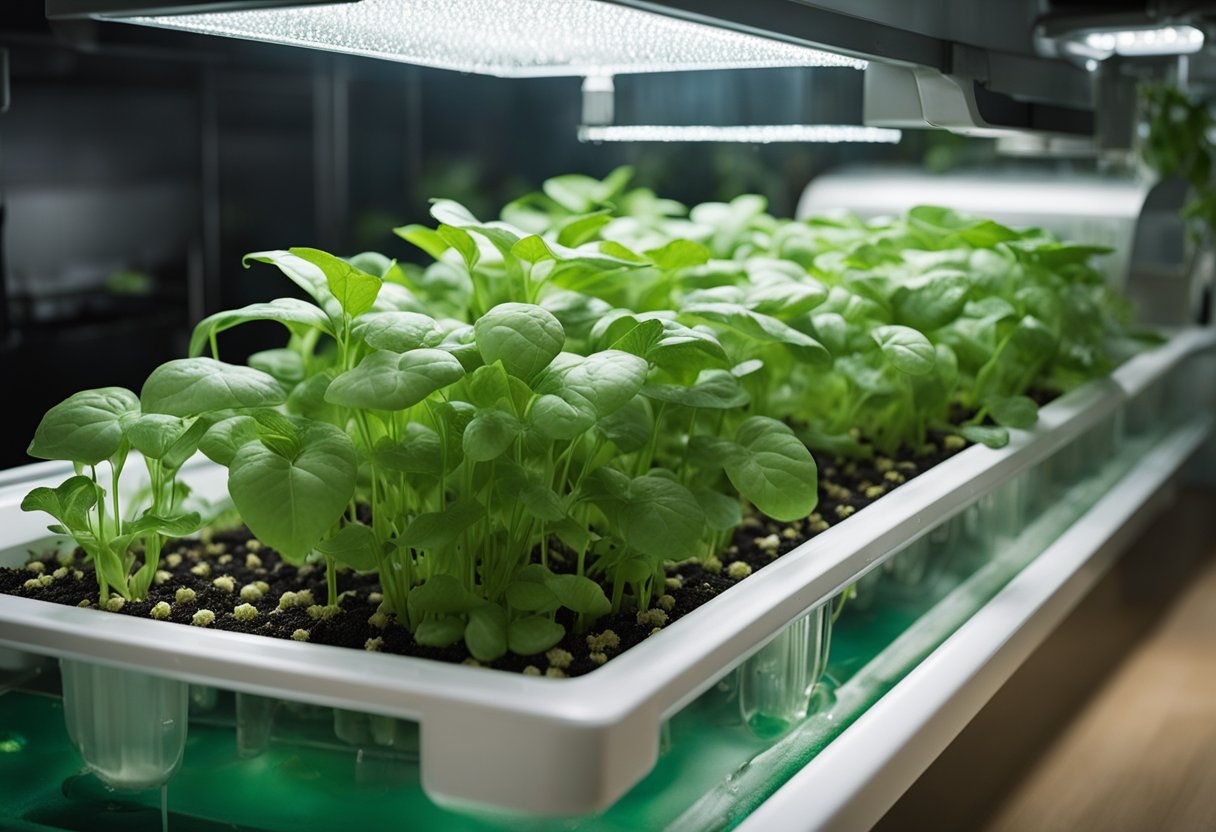
In our exploration of Deep Water Culture hydroponics systems, we'll discover how this method of growing can revolutionise our approach to hydroponics with its noteworthy benefits.
Rapid Plant Growth
Ever wished for a garden that grows at an almost magical pace? With DWC, this is more than just a wish. Our plants enjoy fast growth due to continuous access to oxygenated water and nutrient-rich solutions. This constant care means a robust root system that doesn't need to search hard for its sustenance, which can often accelerate growth compared to traditional soil gardens.
Higher Yields
We're all after abundant harvests, and DWC systems deliver just that: higher yields. Imagine the satisfaction when we reap more than we sow, all thanks to the efficiency of the DWC setup. The plants have direct access to nutrients 24/7, leading to not only faster growth but also larger produce. In fact, some gardeners have noted they can harvest up to twice as fast as they would from soil-based plants.
What Makes DWC Stand Out:
- Simple & Cost-efficient: Setting up a DWC system might seem futuristic, but it's far from complex. It's both simpler and more cost-effective in the long run compared to other hydroponic systems.
- Low Maintenance: Once you've got it going, DWC pretty much looks after itself. A low-maintenance dream, right?
- Water & Nutrient Savings: We recirculate the hydroponic nutrient solution in DWC, which means we're using a smaller amount of water and nutrients. Isn't it great when we can be resourceful and still get fantastic results?
- Less Pests & Diseases: Without soil, the risk of pests and diseases is significantly diminished, giving us one less thing to worry about.
- Complete Control: Fancy having more say over your growing environment? DWC hands us the reins, allowing us to tweak conditions to our heart's content.
By incorporating DWC into our growing systems, we're setting ourselves up for a future of plentiful, healthy harvests with fewer headaches along the way. It's a straightforward, resourceful, and bountiful approach to modern gardening.
Disadvantages Of Deep Water Culture
While Deep Water Culture (DWC) systems boast numerous advantages, they also come with their own set of drawbacks that we should consider. Let's dive into some challenges you might encounter with DWC and discuss how to mitigate them.
Monitoring and Maintenance
A constant supply of electricity is vital for DWC systems, as they rely on equipment like air pumps to oxygenate the water. Power outages or equipment malfunctions can spell disaster, leading to crop failure if not addressed swiftly.
- Prevention tips: Consider investing in a backup generator or UPS (Uninterruptible Power Supply) to guard against unexpected power cuts. A timer can help regulate the system's electrical components, reducing the wear and tear on equipment.
Additionally, maintaining the optimum pH, temperature, dissolved oxygen, and nutrient levels is crucial. These factors can fluctuate, requiring frequent monitoring to ensure plant health.
- Helpful tools: Stay on top of things with a pH meter, water chiller, dissolved oxygen meter, and Total Dissolved Solids (TDS) meter. These devices will assist in maintaining a consistent and healthy environment for your plants.
Risk of Algae Growth
Stagnant water in DWC systems can lead to the growth of algae, which competes with plants for nutrients and can lead to root rot and nutrient lockout.
- Combating algae: To curb algae growth, use a light shield to block light from entering the nutrient solution. Regularly adding a hydrogen peroxide solution can help oxygenate the water and suppress algae without harming your plants.
Remember, keeping an eye out for these challenges and employing preemptive measures can go a long way in ensuring the success of our DWC hydroponic system.
How Does A DWC Hydroponic System Work?
First, let's list what's needed: a reservoir, air pump, air stone, tubing, a drill with a hole saw, net pots, a suitable growing medium, seeds or seedlings, water, and hydroponic nutrients. Got everything? Brilliant!
Here's our step-by-step:
- Prepare the reservoir: Drill holes in the lid to snugly fit your net pots.
- Nutrient mix: Fill the reservoir with water and stir in hydroponic nutrients, following the directions on the label.
- Oxygenate: Connect the air pump to the air stone using the tubing, submerge the stone in the water, and let those bubbles flow.
- Planting: Pop your growing medium into the net pots. Bury those seeds or nestle the seedlings in nice and cosy.
- Submerge the roots: Place the net pots into the holes on the reservoir lid. The plant roots should just touch the water.
- Light it up: Position the reservoir in a well-lit area or under grow lights.
Keep an eye on the water level and adjust nutrient concentration as your plants drink up. This simple system lets plant roots soak up all they need directly from an oxygen-rich, nutrient-laden water bath, thanks to our trusty air stone churning out oxygen. If you’re a visual learner, certainly hunt down a couple of illustrative videos or diagrams for a clearer picture. They’ll show you exactly how each part comes together to create an efficient oxygenated environment for your plants to thrive in. So, there we are! Our garden isn't constrained by soil, and neither are we. Our DWC system is a passport to hassle-free, bountiful harvests.
How Often To Change Water In DWC?
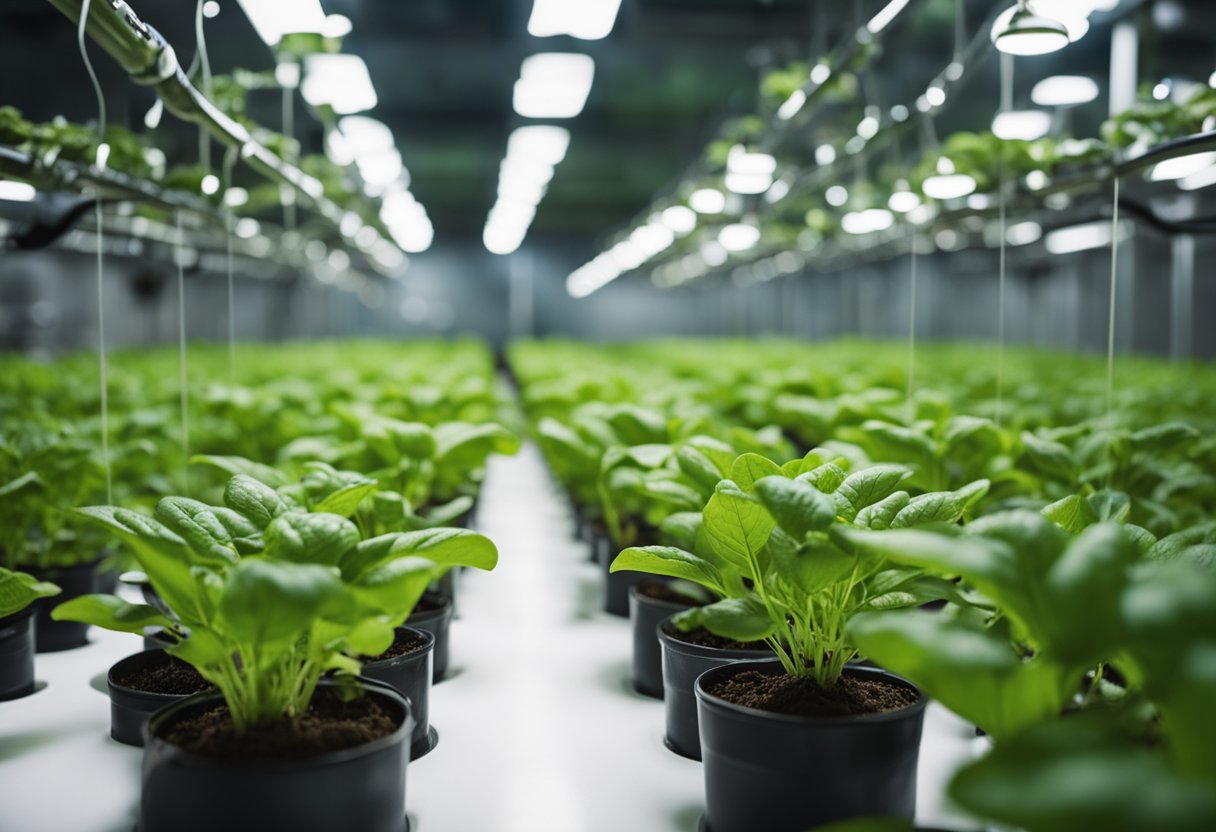
We’re often asked about the do's and don'ts of maintaining a pristine Deep Water Culture (DWC) system, such as how frequently we should swap out the water to keep our leafy friends happy. Let’s break it down.
Importance of Regular Water Changes
Changing the nutrients and water in our DWC system isn't just about being tidy – it's crucial. Doing this regularly prevents nutrient depletion, salt buildup, pH fluctuations, the dreaded root rot, and algae from throwing a party in our system.
Guidelines for Water Change Frequency
- For small reservoirs or if you're cultivating fast-growing plants: Once every 7 to 10 days
- When dealing with large reservoirs or slow-growing varieties: Once every 2 to 3 weeks
- If you’ve got a recirculating system with a pump and filter working overtime: Once every 4 to 6 weeks
Factors Influencing Water Change Frequency
Several factors come into play when considering how often to change our hydroponic water:
- The size and number of plants and the reservoir capacity
- The type and quality of the water and nutrients we're using
- Environmental factors like temperature and humidity
- pH and TDS/EC readings – make sure these are in check!
Tips for Changing Water Safely and Efficiently
Here’s a quick how-to for changing your DWC water:
- Drain the old water: using a siphon, a pump, or good ol' buckets.
- Clean your reservoir: net pots, air stone, and tubing with water and a touch of mild bleach solution to avoid unwelcome microbial guests.
- Refill with fresh water: mix in hydroponic nutrients as per the label’s handshake (wink to our bottle instructions there).
- Measure and adjust: pH and EC/TDS with a reliable meter.
- Before sealing it back up, check our plant's roots are having a splash in the water.
Remember, these are just pointers – keep an eye on your system and listen to what it’s telling you.
Variations Of DWC
In the world of DWC hydroponics, we're not stuck with just one way of doing things – far from it! Let's dive into two specific variations that have been tailor-made to maximise plant happiness and yield.
Recirculating DWC
Recirculating DWC system, or RDWC for short, is all about efficiency. In this growing method, we use a water pump to move the nutrient solution between different reservoirs connected to multiple plants. It's like a communal swimming pool for your plants, where everyone gets to share the good stuff. Recirculating Deep Water Culture is particularly ace if you're scaling up, as it ensures a consistent environment for all plants, which is crucial for their growth.
- Pros: Equal distribution of nutrients; better for larger setups.
- Cons: More complex setup; potential for issues if one plant gets sick.
Bubbleponics
Right, let's talk about Bubbleponics, a cheque technique for hydroponic gardeners. Picture this: your nutrient solution doesn't just sit there; it's delivered directly to the base of the plants like a VIP service. This is all thanks to a water pump and a top-notch drip system. It's like your plants are sipping cocktails by the water—only the cocktail is a nutrient-rich solution!
- Pros: Direct nutrient delivery; faster growth in the initial stages.
- Cons: A tad more hands-on; equipment may need regular checks.
Now, we've given you two solid options that can kick your hydroponic adventure up a notch. Have fun with them, and watch your plants thrive!
Growing Plants in DWC
Deep Water Culture or DWC, is a method of hydroponics ensuring plants have everything they need at their rooty fingertips. Ever wondered if you could grow a veggie feast without soil? With DWC, it’s not just possible, it’s also pretty straightforward.
Suitable Plants for DWC
Let's chat about what plants can grow in our DWC system. Believe it or not, lettuce ranks high as an aquatic superstar; it just thrives in these watery depths. Similarly, leafy greens like spinach come out lush and flavourful. Want more variety on your plate? Add some herbs, strawberries, and peppers to the mix; they absolutely love a good hydroponic session.
| Best Bets for DWC |
|---|
| Lettuce |
| Leafy Greens |
| Herbs |
| Strawberries |
| Tomatoes |
| Peppers |
| Spinach |
For those of us with a penchant for Italian cuisine, a DWC setup can also grow tomatoes, but let's give them a sturdy support structure, as they can get a little rambunctious.
Starting From Seeds
Right, let's get down to business with seeds. First off, grab some rockwool cubes. These little wonders are brilliant for getting your seeds off to a cosy start. Make sure to soak the rockwool in pH-balanced water before you introduce your seeds to their new homes; we’re not barbarians, after all. To kick off germination, pop one or two seeds into each rockwool cube and wait for the magic to happen. You don't need a huge setup; a small tray can house dozens of these cubes.
Once those green shoots peek out and say 'hello', it's time to move them to the DWC system where they can spread their roots. Keep an eye on your seedlings as they transition; they'll need some tenderness, care, and good old-fashioned nurturing. But before long, you’ll see them grow with gusto in their watery abode, ready to be fawned over and eventually, make their way to your plate. How rewarding is that?
Nutrients and pH Management
Just like us, plants need a balanced diet to thrive. We'll take a look at the two key aspects that keep our green friends happy in DWC hydroponic systems: nutrients and pH levels.
Optimum Nutrient Concentration
It's crucial to mix a nutrient-rich solution with the exactness of a gourmet chef. If we get the mixture just right, our plants will gobble up those nutrients effectively. A golden standard to aim for is a nutrient concentration that supports robust plant growth without going overboard. Depending on the growth stage, leafy greens often prefer an EC (electrical conductivity) value from 1.2 to 2.0 mS/cm, with nutrient levels adjusted accordingly.
- Seedlings/Cuttings: low to moderate concentration
- Vegetative Stage: increased concentration
- Flowering/Fruiting Stage: highest concentration
Keeping an eye on the water level is key because as water evaporates, the nutrient concentration can inadvertently spike.
Maintaining pH Balance
And fancy a bit of chemistry? pH levels are paramount since a slight shift can turn a nutrient solution from a gorgeous gown to an unwearable wetsuit for the roots. We're looking for the sweet spot, typically a pH range from 5.5 to 6.5, where nutrients are most available to plants. Here's where a pH control kit comes in handy. It usually packs both pH up and pH down solutions because pH levels love to waltz around. By regularly testing and tweaking:
- Test: Check pH with a simple test kit.
- Adjust: Use pH up or pH down if needed.
- Stabilise: Wait, retest, and adjust as necessary to keep those pH fluctuations in check.
And let's not forget, water temperature affects pH as well—best practice is keeping it between 18-22°C (nice and cosy, not too hot or cold for our plant pals). By managing these aspects diligently, we set the stage for a successful harvest, making every effort in our DWC (Deep Water Culture) hydroponic system truly worthwhile.
Setting Up Your Own DWC System
When we talk about creating a home for our plants through DWC hydroponics, remember we're providing them with a simplified spa experience. Imagine their delight as they hydrate and breathe in a luxurious bubble bath of nutrients. Fancy setting one up? Here's how we can get our hands dirty—in the cleanest way possible!
Choosing the Right Equipment
Deciding on the kit for our DWC hydroponics is a bit like picking out a new smartphone. We want efficiency, reliability, and a lovely array of features to bolster our plant's growth. Here are our essentials:
- Air Pump: Just as fish need a bubbler, our DWC system must have a solid air pump. Oxygen is the breath of life for hydroponically grown plants.
- Air Stones: These are the unsung heroes that work with the air pump to distribute oxygen evenly through the water in the form of fine bubbles.
- Water Reservoir: Be it a simple bucket or a large bin, this is the space where our nutrient solution and plants will live.
- Net Pots: These little baskets snugly cradle the roots of our plants and keep them suspended in nutrient-filled nirvana.
- Hydroponic Nutrients: These specially formulated nutrients ensure our plants get all the necessary minerals to go from seedling to superstar.
- Growing Medium: Sterile and pH-neutral media, like LECA (Lightweight Expanded Clay Aggregate) pebbles, support our plants and help to transport nutrients to the roots.
To check the environment's quality, we’ll need a pH meter and a TDS (Total Dissolved Solids) meter. It's like having a personal health check-up for our plants, but without the anxious waiting for results.
DIY DWC System
Ready to build our own DWC system from scratch? Here's the basic blueprint we can follow:
Step 1: Gather our materials and components. This includes everything listed above. Brace yourself for some DIY action!
Step 2: With our water reservoir picked out, we'll need to carefully mark and make holes in the lid just big enough for the net pots to snugly fit through. We should see only the roots pass through—not the entire pot dropping in.
Step 3: Transform plastic pots into net pots by creating holes in the sides and bottoms. These should be large enough to allow roots to freely pass through but small enough to keep the growing medium in.
Step 4: Prepare the LECA pebbles by rinsing them clean. We're paring down the natural habitat to its most pristine never-touched-by-nature condition.
Step 5: Place our humour-loving air stone at the bottom of the reservoir, connect it to the air pump, and let it bubble away to its heart’s content.
Step 6: Pop our plants in their net pots, pamper them with the prepared growing medium, and lovingly place them into the holes we created in step 2.
Once we've checked the pH levels and adjusted the nutrient solution, our DIY DWC system is a green light for growth! The simplicity of air stones gurgling and roots basking in nutrient glory is almost poetic, isn't it? Plus, the gratification of DIY — nothing beats that hands-on triumph.
Conclusion
In this journey, we've navigated the waters of Deep Water Culture (DWC) hydroponic systems with you. At its core, DWC hydroponics is a method that ensures plant roots are submerged deep in an oxygen-rich water nutrient solution, promoting rapid growth and lush yields, especially for leafy greens and herbs.
What Makes DWC Hydroponics Stand Out?
- Simplicity: The simplicity of the DWC system makes it a fantastic choice for beginners looking to dip their toes into hydroponic cultivation. Even those of us without a green thumb can find success.
- Efficiency: Commercial growers appreciate the efficiency DWC systems offer - providing excellent results without complex setups.
- Oxygenation: A central reservoir equipped with an air stone ensures the nutrient solution remains in aerated water, which is vital for healthy root systems.
- Scalability: Whether it's a single bucket or an expansive array of modules, DWC systems can scale to match your aspirations in growing.
Let's not forget the disadvantages, though. Monitoring is crucial; temperature shifts or system failures can quickly turn a thriving garden into a wilted disappointment. It calls for our vigilance and care.
Now that we've covered the essentials, it's clear DWC hydroponics offers a fusion of ease and productivity. We triumphantly conclude that it presents an efficacious way to cultivate a bountiful harvest, whether you're sprouting your first seedling or nurturing an entire greenhouse. Let's celebrate our newfound knowledge and the potential it unlocks for greener, more efficient futures!
Ready to get your hands wet? Dive into DWC hydroponics and watch your garden flourish!







 Store Locator
Store Locator
